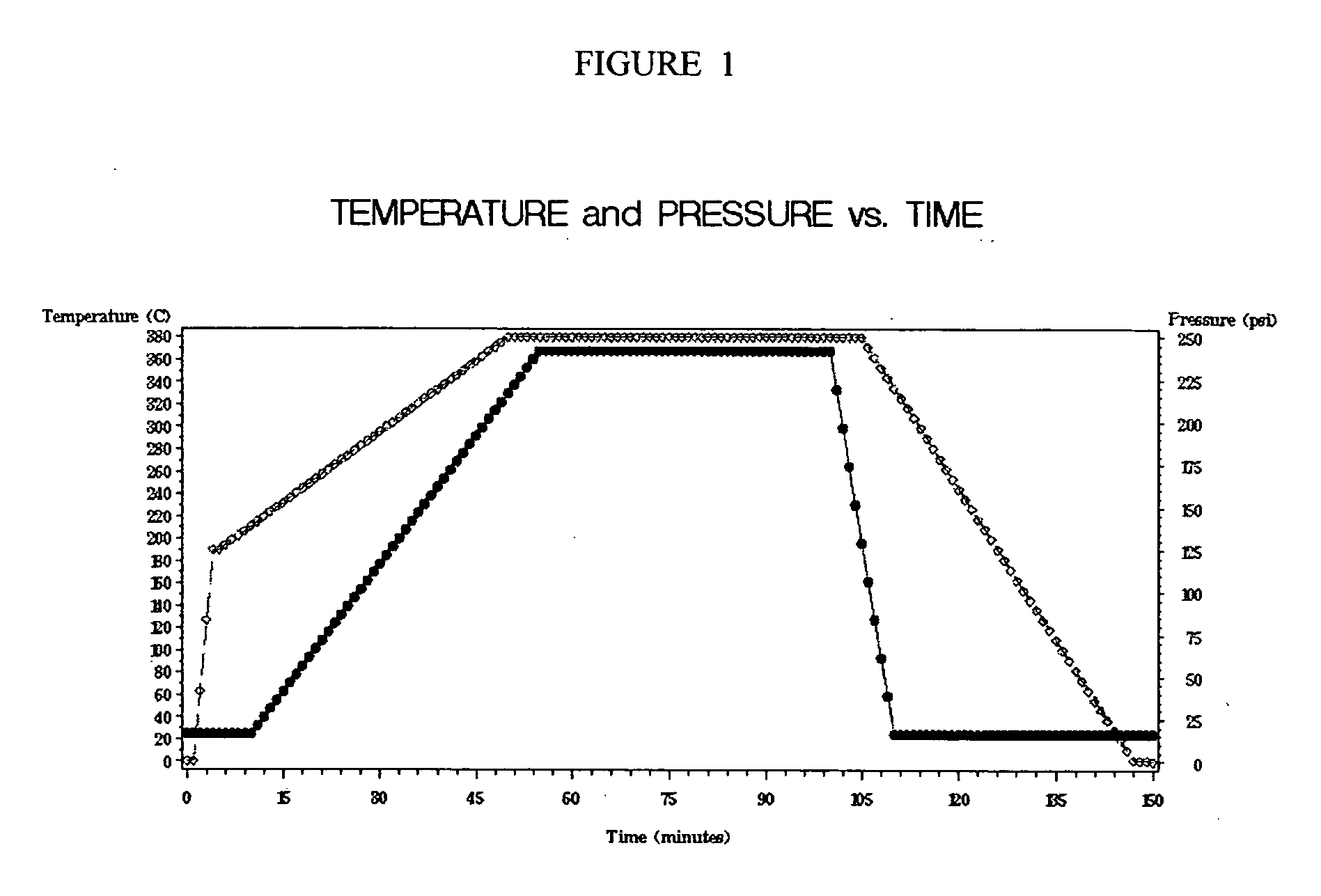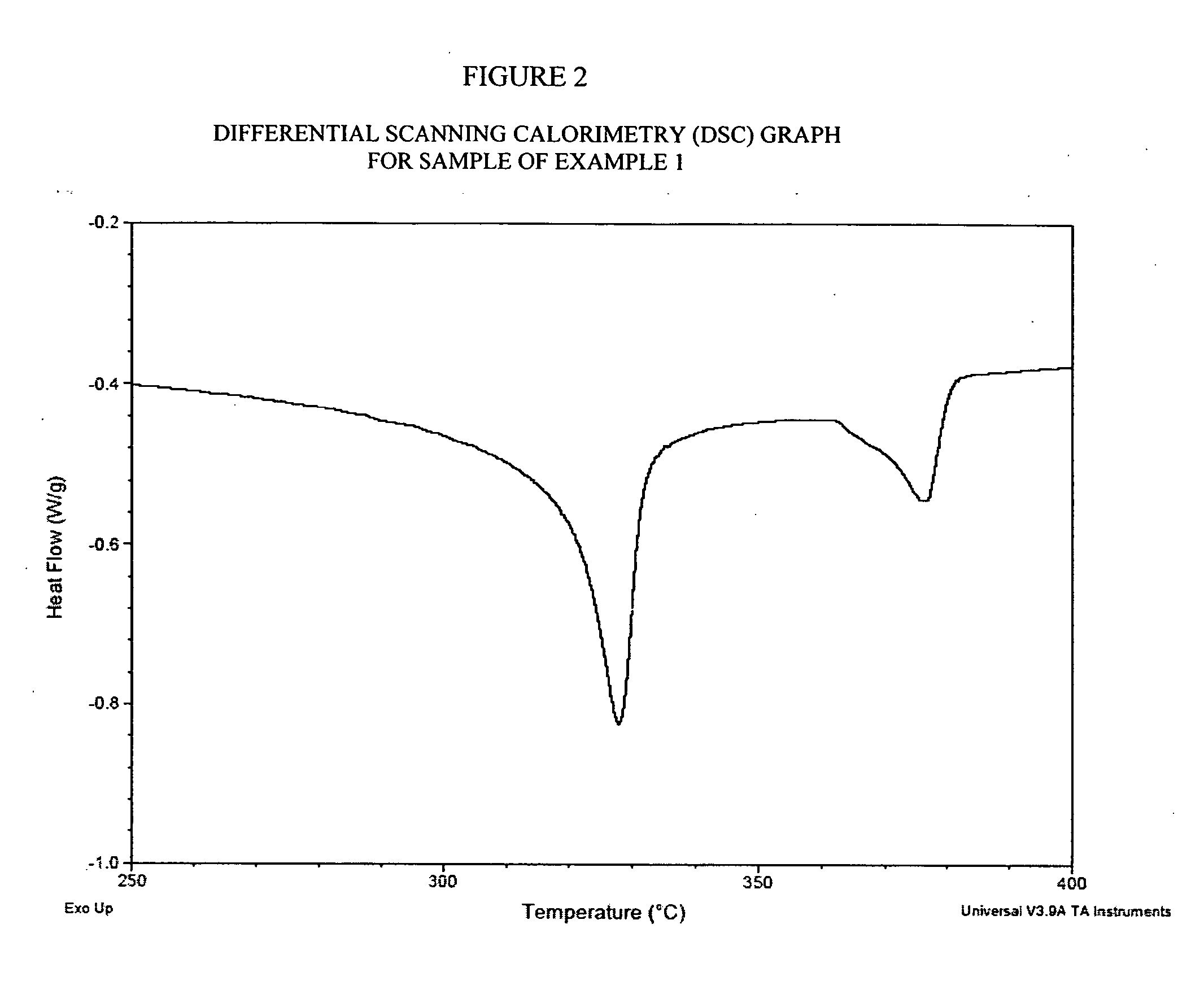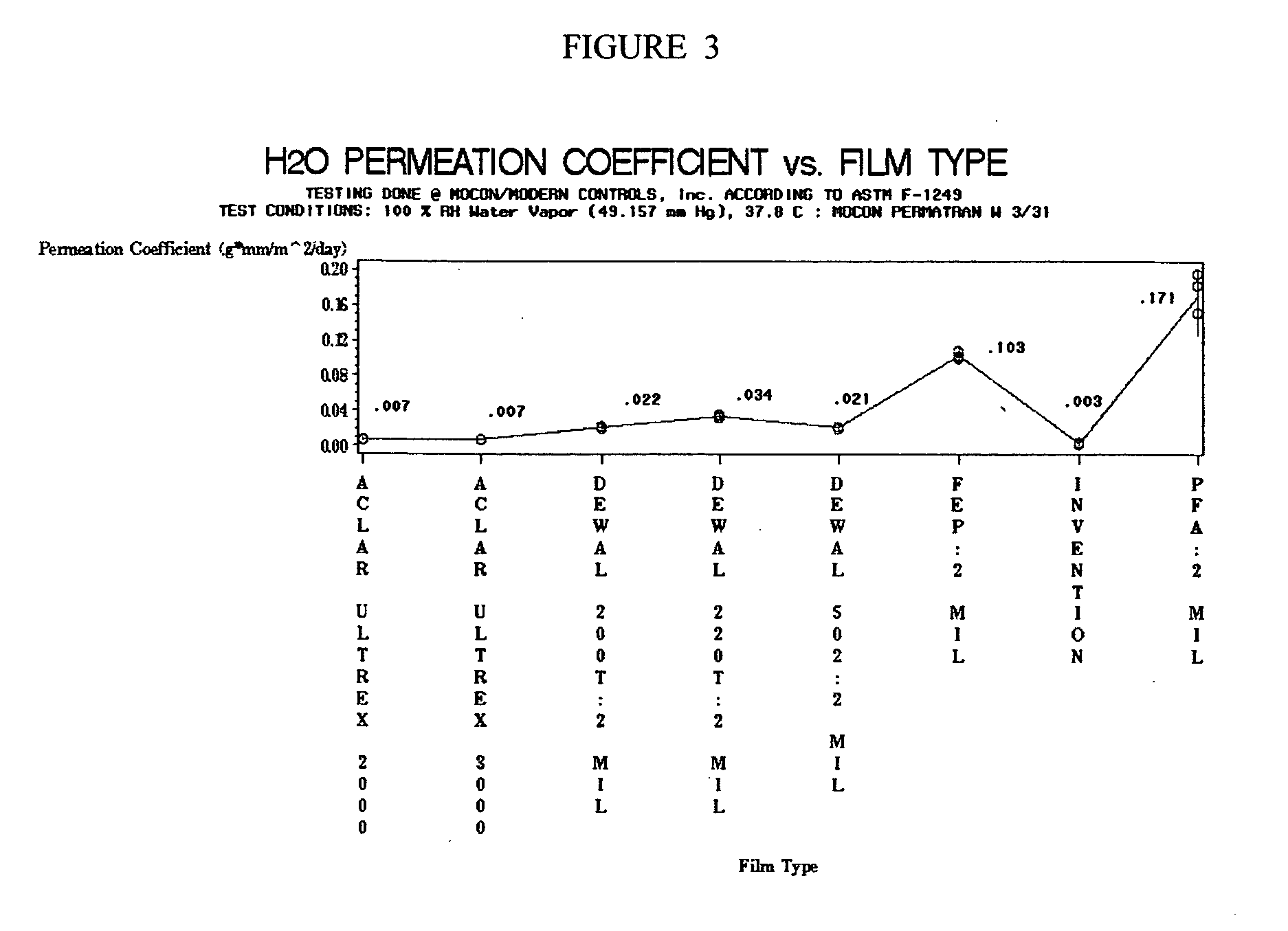Fluoropolymer barrier material
a fluoropolymer and barrier material technology, applied in the field of fluoropolymer barrier materials, can solve the problems of inability to meet the needs of the user, and added processing costs, etc., and achieve improved fluoropolymer barrier materials, enhanced barrier properties, and excellent water vapor permeation resistance.
- Summary
- Abstract
- Description
- Claims
- Application Information
AI Technical Summary
Benefits of technology
Problems solved by technology
Method used
Image
Examples
example 1
[0058] A 240 lb. aliquot of PTFE fine powder (PTFE 601A, DuPont, Wilmington, Del.) was combined with 44.16 lb. of lubricant (Isopar K, Exxon, Houston, Tex.), subsequently blended, compressed into a cylindrical pellet, and thermally conditioned for 18 hours at a temperature of 49° C. The cylindrical pellet was then extruded through a rectangular die at a reduction ratio of 70:1. The resultant tape was then dried in order to remove the lubricant.
[0059] The dried PTFE tape was then expanded in the y-direction between heated drums at a linear rate of greater than 10% / s, a drum temperature of 225° C. and stretch amount equal to 400%. The tape was then expanded in the x-direction at a linear rate greater than 10% / s, a temperature of about 295° C. and stretch amount equal to 700%. The resulting product was an unsintered ePTFE membrane.
[0060] In order to determine the effect of sintering on the water vapor permeability of membranes, a portion of this unsintered ePTFE membrane was restrain...
example 2
[0066] A laminate of dense PTFE and perfluoroacrylate (PFA) was made in the following manner. Specifically, a PTFE material was made according to the processing conditions noted for the “A” samples described in Example 1, using a two-pass stretching operation. Following the second pass stretching, the heater was removed from the pantograph. While the stretched PTFE barrier film remained on the pantograph pin body, a PFA film (Part No. 100 LP, 0.001 inch (25 μm) thick, from DuPont, Wilmington, Del.) was placed on one side of the PTFE barrier film. The two films were then subjected to a temperature of 370° C. for 5 minutes to form a laminate of PTFE barrier film and PFA.
example 3
[0067] An unsintered expanded PTFE material was made and densified according to U.S. Pat. No. 5,374,473 Knox, et al. as described in Example 1, except that only a single ply of the unsintered material was subjected to the densification step. The resulting densified material was then stretched according to the processing conditions “A” described in Example 1. The resulting PTFE barrier film had a thickness of 0.1 mils (2.5 μm) and a water vapor permeation coefficient of 0.007 g-mm / m2 / day.
PUM
| Property | Measurement | Unit |
|---|---|---|
| matrix tensile strength | aaaaa | aaaaa |
| matrix tensile strength | aaaaa | aaaaa |
| matrix tensile strength | aaaaa | aaaaa |
Abstract
Description
Claims
Application Information
 Login to View More
Login to View More - R&D
- Intellectual Property
- Life Sciences
- Materials
- Tech Scout
- Unparalleled Data Quality
- Higher Quality Content
- 60% Fewer Hallucinations
Browse by: Latest US Patents, China's latest patents, Technical Efficacy Thesaurus, Application Domain, Technology Topic, Popular Technical Reports.
© 2025 PatSnap. All rights reserved.Legal|Privacy policy|Modern Slavery Act Transparency Statement|Sitemap|About US| Contact US: help@patsnap.com



